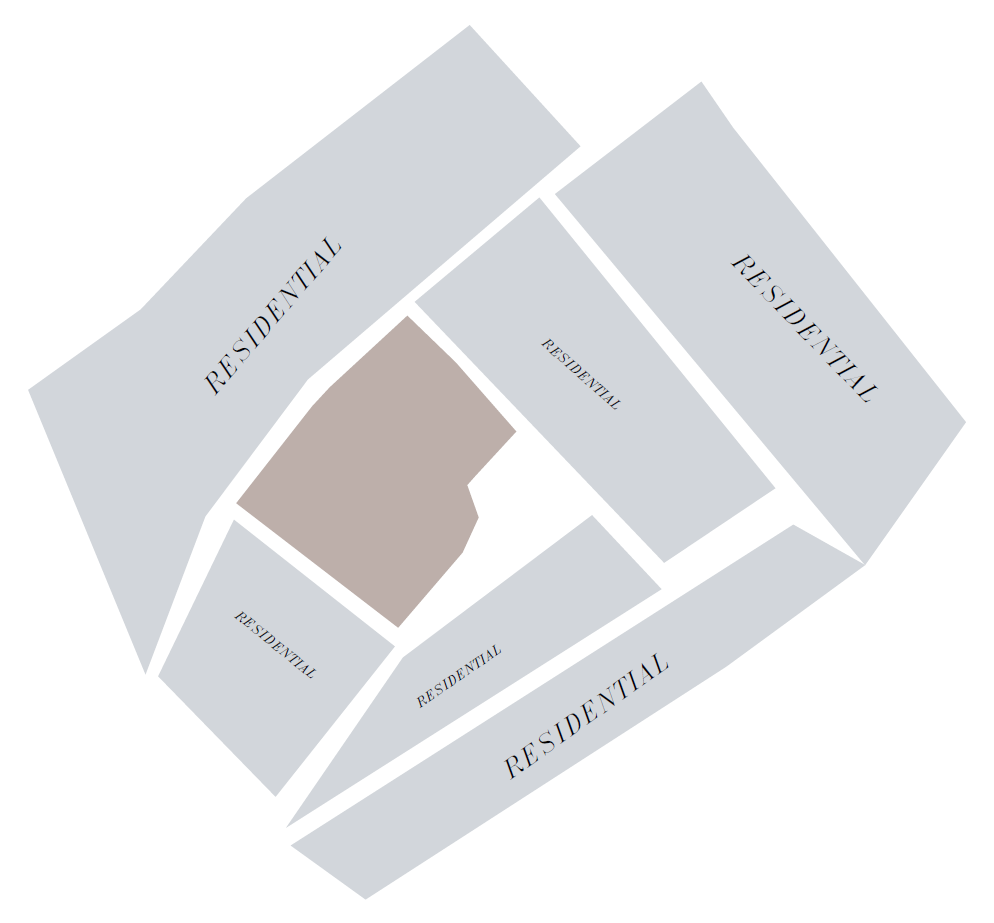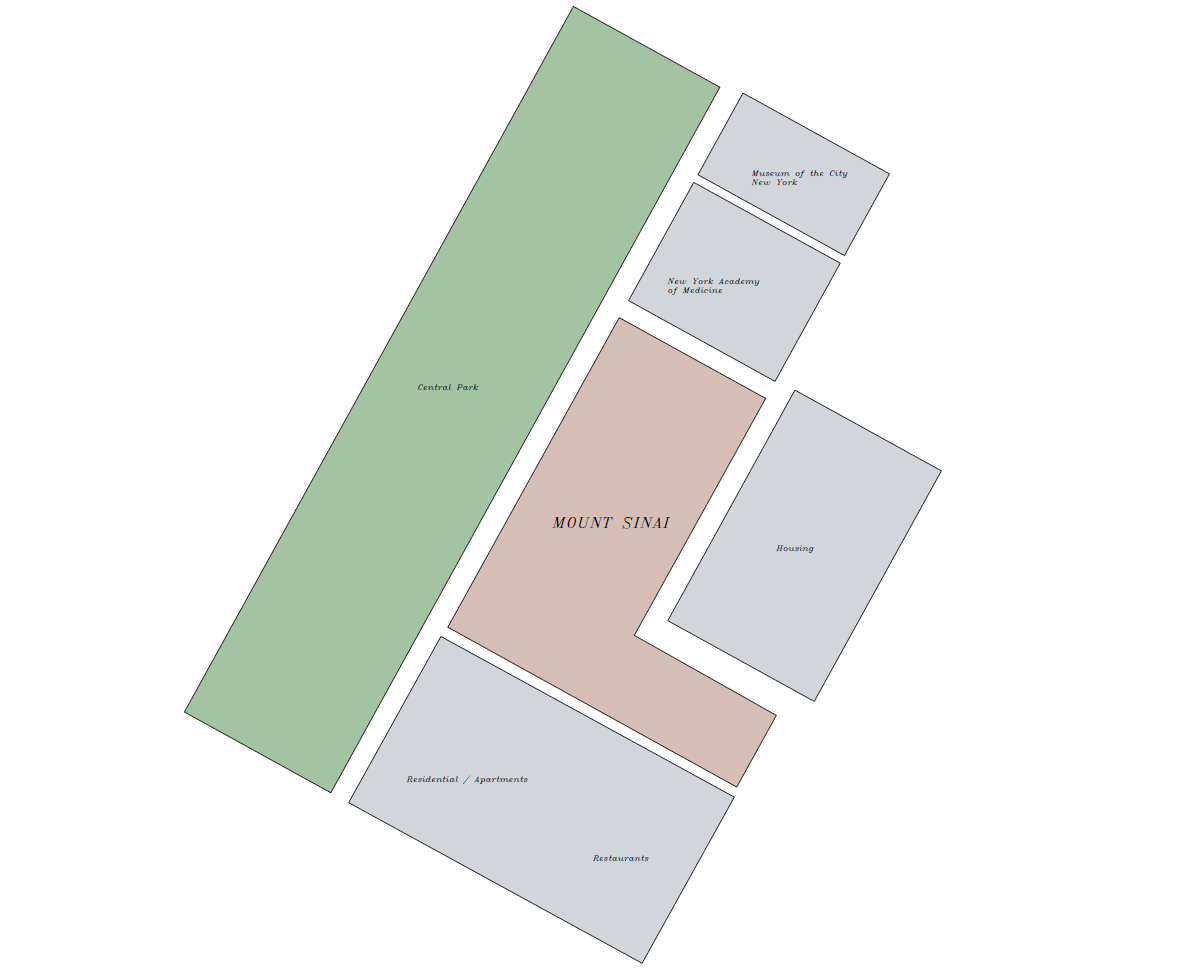8. Upside Down Hospital

DR / 2019
From Upside Down Hospital
WELLNESS: Concepts of Healthcare Free Zones, 2018
Healthcare in the United States
is in need of reformation. By
looking at multiple hospitals in the U.S., Europe, and Dubai in the United Arab Emirates. This project will explore hospitals
around the world to understand
their logics. These 10 case-studies of hospitals
investigate functions and
relationships to complimentary services like gastronomy, hotel,
entertainment, and shopping.
If medical tourism is increasingly establishing new frontiers to escape from centralized hospital systems, its extraterritoriality could be a new opportunity independent of government incentives.
From THE OPEN Book Brief, 2018
This project will take an extended look at phenomena of extraterritoriality and develop new spatial products to extend its potentials. Extraterritorial spaces exist outside the normal jurisdictions of nation-states an constitute an ambiguous zone in contemporary urbanism. Everything from duty-free shopping areas of airports to embassies to free trade zones to military bases are examples of these peculiar spatial conditions that exist adjacent to, but ultimately outside of, the normal spaces of societies. All of these examples can be understood as a kind of spatial product that has been manufactured to fulfill some unaddressed need of globalization. In this studio, we want to understand this phenomena and design new spatial (and temporal) objects in relationship to it. Because of their controversial nature, extraterritorial spaces tend to hide — stakeholders seek to guard their interests and veil their plans within the narratives of unrelated plans. Therefore, the research will require some skepticism and detective work. However, the premise of this studio is that phenomena of extraterritoriality address provocative potentials of urbanization and that its potentials, usually suppressed by the organizational needs of the nationstate, may not be undesirable. We will explore in this studio what other forms of life might be made possible when the constraints of nationhood are released, giving way to something radically open.
![]()
If medical tourism is increasingly establishing new frontiers to escape from centralized hospital systems, its extraterritoriality could be a new opportunity independent of government incentives.
From THE OPEN Book Brief, 2018
This project will take an extended look at phenomena of extraterritoriality and develop new spatial products to extend its potentials. Extraterritorial spaces exist outside the normal jurisdictions of nation-states an constitute an ambiguous zone in contemporary urbanism. Everything from duty-free shopping areas of airports to embassies to free trade zones to military bases are examples of these peculiar spatial conditions that exist adjacent to, but ultimately outside of, the normal spaces of societies. All of these examples can be understood as a kind of spatial product that has been manufactured to fulfill some unaddressed need of globalization. In this studio, we want to understand this phenomena and design new spatial (and temporal) objects in relationship to it. Because of their controversial nature, extraterritorial spaces tend to hide — stakeholders seek to guard their interests and veil their plans within the narratives of unrelated plans. Therefore, the research will require some skepticism and detective work. However, the premise of this studio is that phenomena of extraterritoriality address provocative potentials of urbanization and that its potentials, usually suppressed by the organizational needs of the nationstate, may not be undesirable. We will explore in this studio what other forms of life might be made possible when the constraints of nationhood are released, giving way to something radically open.

Discovering the Problem with Healthcare Cities
Dubai Healthcare City (DHCC) is the first international, integrated free healthcare zone developed to promote medical tourism in Dubai. The DHCC is home to two hospitals which are internationally accredited, over 100 medical centers offering expertise in more than 80 specialties, over 2500 licensed professionals speaking over 40 languages and more than 180 commercial healthcare and retail businesses.
The plan for this healthcare zone was to actualize the concept of a unique free healthcare zone with what would be the center of clinical, educational and research excellence in the region and globally. The project was supported by the Government of Dubai, and the establishment of a corporate governance infrastructure, central to the free zone status is made up of comprehensive regulations, rules, policies, standards and guidance, designed to guarantee the delivery of world-class qualitative healthcare related services within the free zones.

 Dubai Healthcare City Development Diagram.
Dubai Healthcare City Development Diagram.
DHCC changes location to marina appealing towards a stylized hospital “resort”.
Concern Over Healthcare Cities, Targeting Capitalism Within the Hopsital Zone
Other sources of metaphysical damming includes self-contained, gated corporate parks, residential communities, and giant multipurpose shopping malls. In fact, these three types of projects are increasingly merging into enormous developments that combine residential, entertainment, retail and tourism functions.
Collectively, these utopian projects of “late capitalist phalansteries” are flawed because of their size, self sufficiency, and hybridity. An architecture firm’s vision of Phase II in Dubai Healthcare City includes yachts, luxurious hotels and spa basins. These projects, which began appearing in Dubai in the second half of the 1990’s are an example of another problematic utopian imagination of Dubai.


With all its eyes the creature-world
beholds the open.
But our eyes, as though reversed, encircle it on every side,
like traps set round its unobstructed path to freedom.
— Rainer Maria Rilke
But our eyes, as though reversed, encircle it on every side,
like traps set round its unobstructed path to freedom.
— Rainer Maria Rilke


Part 2: New Orleans’ Charity Hospital
CHARITY HOSPITAL, NEW ORLEANS, LOUISIANACharity Hospital was destroyed and abandoned after Hurricane Katrina in 2005. If Dubai Healthcare City’s fantastical future is redefining healthcare as a luxury, the next course of action is to implement a free zone in a hurricane city. The formal studies disclose spatial relationships between old and new parts. This project will bring New Orleans’ Charity Hospital back to life as a healthcare free-zone restoration and expansion project. By adding a roofing system, the aim of the project is to give the rigid machine-like hospital a more liberated form.
Charity Hospital Expansion
An expansion to the hospital is arranged as a medical campus providing tax-free incentives to aid residents of New Orleans, and treatment for medicaltourists. The trellis supports a temporal landscape to encounter monumentality and intimacy. Medical tourism is becoming a specific interest to patients around the world.
Functions included are Pharmacy, Votive, Emergency Rooms, Housing, Research / Laboratories, Private Offices, Gastronomy, Mental, Institution, Rehab, Operating rooms, Sanatorium / Nutrition
Heightened emphasis on improving patient outcomes and quality of healthcare. The free zone would allow citizens of New Orleans a tax-free status. Business owners and doctors to have 100% foreign ownership. Meaning, a doctor from Germany could open an office at the facility on travel. Super-flexibility for quick expansion. For the need to expand, the need to expand quickly and accommodate wide swings in patient volumes. Operational efficiencies; we are trying to find ways to do more with less. Hospitals want to increase the productivity of their operations. The plan for this healthcare zone is to actualize the concept of a unique free healthcare zone what would be the centre of clinical, educational, and research excellence in the region and globally. The social urgency to focus on public health, public space and private interest.


 Polyclinico, Italy
Polyclinico, Italy Pitie Salpetriere, France
Pitie Salpetriere, France UCLA, Los Angeles
UCLA, Los Angeles Ceder Sinai, Los Angeles
Ceder Sinai, Los Angeles
Mount Sinai, New York
